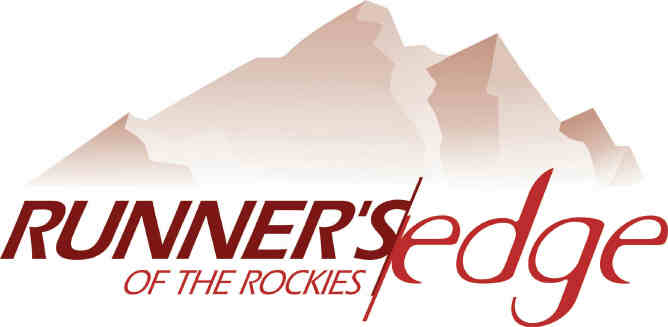
Our Upcoming Races
Running with the Cows Half - 05/10/2025
Colfax Marathon - 05/18/2025
Greater Kansas City Midwest Half Marathon - 05/18/2025
Bill Snyder Highway Half - 05/24/2025
Hospital Hill Run - 05/31/2025
Clinton Historic Half - 06/14/2025
Hometown Half Marathon - 06/14/2025
Midwest Twin Cities Half - 06/29/2025
Four on the 4th - 07/04/2025
Valentine Marathon/Half - 08/02/2025
Words to run by
"Just remember, once you're over the hill you begin to pick up speed." Charles Schultz
2012 Pacer Report
While you have helped hundreds of people end up running a more positive race than they would have otherwise, I want to take this time to address how we can improve collectively as pacers. Hopefully, you will share in my belief that there is always room for improvement.
Dealing with Mismarked miles
This seems to have reared its ugly head more often in races this year than in the past. Often, the person who measures and certifies the course while noting the location of the mile marks is not the same person who sets out the mile markers. As a result, to the extent these two people or groups of people communicate clearly enough with each other, there will be a risk in the person setting up the mile markers doing so in the wrong locations.
Remember about the Garmin Drift
On average, your Garmin will be 99% accurate. This means it will read 1.01 at the 1 mile mark, 2.02 at the 2 mile mark, 4.04 at the 4 mile mark, and so on up to 13.24 for the half marathon (13.11 + .13 for each of the 13 miles) and 26.48 for the marathon (26.22 + .26 for each of the 26 miles). This means that you'll actually need to run about 5 seconds faster per mile so that you'll get closer to having your split line up with the mile marker. If the mile marker is more than .02 off compared to what your Garmin reads, I want you to be skeptical of that mile mark and instead rely more on your Garmin and intuitive sense of rhythm - feel free to solicit your group's Garmins and their sense of pace if you're not sure.
Practice makes perfect
To the extent you have a tough time locking into the rhythm of a pace, this means you'll just have to practice it more. I make it a point to practice whatever pace I intend to pace until I have a very good sense of what it feels like. You should take your job just as seriously and do the same. It's very easy to incorporate this practice time into your runs by doing so while you warm up, cool down, or during recovery runs.
I want you to be prepared enough so that you do not freak out about a mismarked mile. Stay the course and only make slight adjustments according to your Garmin and sense of pace. Our 'divide & conquer' system will help one of you stay a little under the time while the other pacer stays a little over the time. While we cannot do anything about a mismarked mile, we still can control our attitude and effectiveness as a pacer.
Of course, I'll pass along your constructive criticism to the race director, but that's all we can do. Moving forward, let's hope for the best, but plan for the worst.
Dealing with a course that's short or long
This brings a whole new complexity to the situation since if you were on pace that means you'll either end up with a time noticeably faster or slower depending on how short or long the course is.
We can simply blame the race for this major error and stick to our job.
Or, for extra credit, on your way to getting to the race, you can drive the last mile (mile 12 or 25) to as close as you can get to the finish while measuring your Garmin and jog the rest of it with your Garmin after you park. You can also warm up before lining up and at least go out half mile according to your Garmin while noting something easy to use as a marker so that you can begin adjusting further out than simply waiting until you can see the finish. I intend to do this for any race I pace.
Again, our 'divide and conquer' system will increase the chances over compensating somewhat for this error by having one pacer closer to being under and the other closer to being over.
Pacing the Time vs. Pacing the People
This is where the 'art' of pacing comes into play. In getting to know your group at the start and during the race, you'll have to decide how important it will be to make sure the lead pacer finishes under the time, even if just for a small percentage of the group while the trailing pacer focuses more on helping the most people finish close enough to the time.
Simply put, on average, the lead pacer should pace the time while the trailing pacer paces the group they started out with without falling too far behind the pace. How far behind depends on how close the next pace team is behind you and how big the group you're helping is.
-If they're 5 minutes behind, you shouldn't fall more than 1-2 minutes off your pace.
-If they're 10 minutes behind, you shouldn't fall more than 2-5 minutes off your pace. The bigger the group you are helping, the further off you can fall off since our co-main objective is to help people. Common sense dictates that you can spread out to help more people than just pacing side-by-side. Therefore, I will start seeing pacers together or with similar finishing times as a negative thing towards evaulating you when it comes to giving you the race and pace time you request for future reference. Our 'Divide & Conquer' strategy will help more people overall. The lead pacer focuses more on the pace while helping those who are able to stick around while the trailing pacer focuse more on helping the most people they can while falling back as they deem necessary - of course, they should clearly communicate to their group that the objective for those with concrete time goal is to catch up to the lead pacer and that they will likely finish over the time. Each pacer should separately finish with people, not together by themselves. Enough half marathon pacers continue to report that people they lose on the last uphill end up passing them on the final downhill to the finish. This tells me that we can afford to slow down on the uphills knowing that our group will be able to make it up on the downhills. At a minimum, the trailing pacer can have a field day with slowing down and seriously consider strategic brisk walk breaks on the more noticeable uphills before encouraging his/her group to catch the lead pacer before the finish on the downhill or flat terrain. A minor point of improvement is to make sure that you stick around for at least 10-15 minutes in the finish line area and look for the people that were in your group. Share in their success!Pacing Together vs. Apart
Take it easier on the Uphills and Make it up on the Downhills
Bask in the glory

The Garmin SmartPacing Team
fueled by Picky Bars

Real [Good] Food. Built To Fuel.
Create a free Chase Chart to help friends and family find you on the course based on your finish time.
after you race, please come back and leave comments about your pacer, and complete a survey to help us improve.
SmartPacing is organized by The Runners's Edge in Kansas City and The Runners's Edge of the Rockies in Denver, with support from
Races2Remember.com.

